How does Technology Help with Social Innovation in Myanmar?
Throughout our history, social innovations have been the instrument of our technological transformation.By applying technology to resolve social innovation challenges, it is conceivable for a developing country such as Myanmar to leapfrog over intermediate stages of development and build a “fit for purpose” economy to suit the modern world.
Home to 53 million people, Myanmar was in decline for decades, with its per capita income of $876 in 2012, the lowest in ASEAN. Estimates from the United Nations and others revealed a poverty rate of 25%. Myanmar began economic reforms in 2011, resulting in average GDP growth of more than 7% from 2012–2016. Analysts are predicting Myanmar to quadruple its economy to more than US$200 billion by 2030 and create 10-million non-agricultural jobs in the process.
With a relatively young demographic, those in the 15-29 age group accounts for nearly 40% of the working population. This group of people need access to jobs. Stronger connectivity between rural areas, markets, and urban centres are essential for the working population to benefit from the country’s growth.
Myanmar, one of the latest developed countries in Southeast Asia, is applying technology to resolve its social innovation challenges. It aims to skip over intermediate stages of development to build a “fit-for-purpose” economy to serve the modern world. We explore three key challenges and explain how Hitachi works hand-in-hand with the Burmese government to co-create a brighter future together.
Myanmar is home to
53million people
Myanmar’s economy is
53 RDLargest in the world
Myanmar’s GDP per capita is
US$6,360In terms of PPP
How Hitachi Co-Creates a Brighter Future for Myanmar

The government is asking Hitachi to install a signaling system on a section of the railway from Yangon to Pyuntaza. The entire upgrade will probably shorten travel times by 40%
Read More

Hitachi is installing an electronic data interchange (EDI) system, so as to reduce the tie for ships to enter and leave Myanmar’s ports
Read More

Hitachi is tasked to deliver approximately 5,400 distribution transformers to help with the growing demands
Read More
Upgrading the Yangon-Mandalay Railway Line
Stronger connectivity between rural areas, markets, and urban centres are essential for the working population to benefit from the country’s growth.
MYANMAR
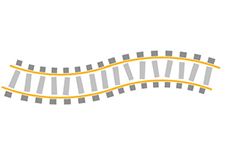
The Yangon-Mandalay line has deteriorated from
140years of wear and tear

Accidents along the railway happen around
100times a year

The Yangon-Mandalay train ride will take around
16hours

If you take a bus, the journey will take
less than12hours
One of the challenges is to improve the connection between Yangon and Mandalay, Myanmar’s largest cities and most important commercial centres. Linking up these two cities is an aging Yangon-Mandalay railway line, where the rails were originally laid in 1877 and have deteriorated from 140 years of wear and tear. Railway accidents along the line occur around 100 times a year.
To upgrade the line, the government has asked Hitachi to install a signalling system for a section of the railway from Yangon to Pyuntaza. The trains currently travel at 60km/h. When the entire railway is upgraded, it is possible for train speeds to reach 100km/h and travel times to be reduced from 16-hours to less than 8-hours.
The improved infrastructure will boost government efforts to improve the living standards of the more than 70% of the population who live in rural areas.
Modernising Myanmar’s Port Data Systems
The system of paper documents for recording the passage of ships and the transport of goods is no longer adequate.
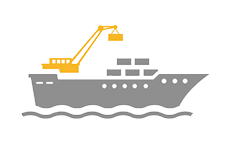
Number of ships entering Myanmar’s ports grew by
2Xover the past decade

Number of inbound containers grew by
4Xover the past decade
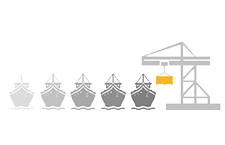
Most ships stay in the ports for an average of
3-5days
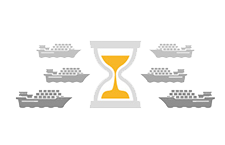
In June 2016, most ships hand to stay for at least
11days
On top of railways, the government is also modernising a range of basic public services.
Myanmar’s ports have relied on paper documents to record the passage of ships and the transport of goods. This manual system is no longer adequate, as the number of ships arriving into Yangon Port has doubled, leading to a fourfold increase of inbound containers over the past decade.
To help, Hitachi is installing an electronic data interchange (EDI) system for Myanmar’s ports. An EDI system will reduce the time for ships to enter and leave Myanmar ports, and make invoicing, logistics and terminal management much easier.
This system will lay the ground for Myanmar to connect to other transit-related data systems, resulting in tighter economic integration with the rest of ASEAN.
Building a Nationwide Power Distribution Grid
The demand for electric power in Myanmar has been accelerating due to the rapid economic development since its reforms of 2011.
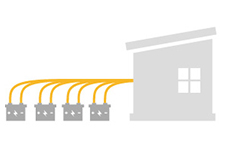
Of all the households in Myanmar in 2016, only
37%have access to electricity
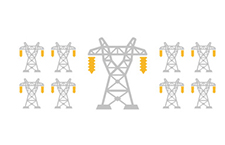
Demand if electric power is growing by around
13%per year
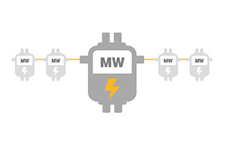
By 2020, the demand will reach an estimated
4500megawatts

By 2030, the demand will grow to more than
600%of the consumption in 2016
Demand for electric power in Myanmar has been accelerating due to the rapid economic development. Rising by around 13% annually, demand is estimated to reach 4,500 MW by 2020 and 13,410 MW in 2030.
The government has set a long-term goal of raising its electrification ratio, from 37% in 2016 to 100% by 2030, with the aim of supplying electricity to every household in Myanmar through the nationwide power distribution grid, known as the Myanmar National Electrification Project.
Hitachi has been helping Myanmar since 1958 when it provided a hydro-electric power system. In 2017, Hitachi is tasked to deliver approximately 5,400 distribution transformers to help with the growing demands. This will play a critical role in raising the nationwide electrification ratio to around 50% by 2020.
Release Date: March 2018


